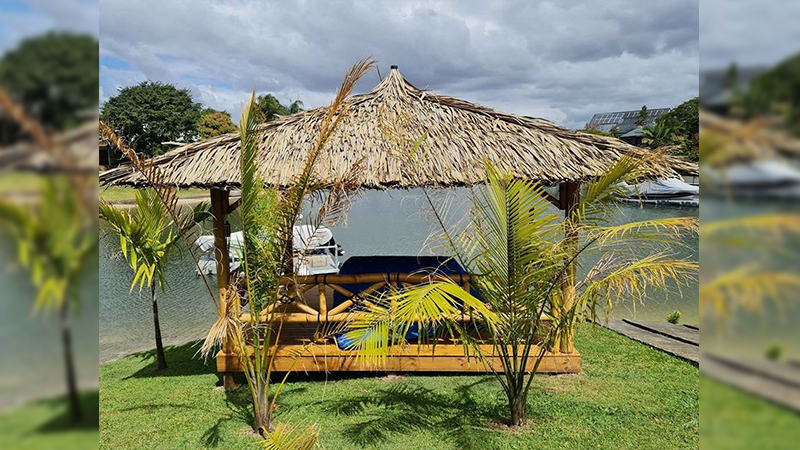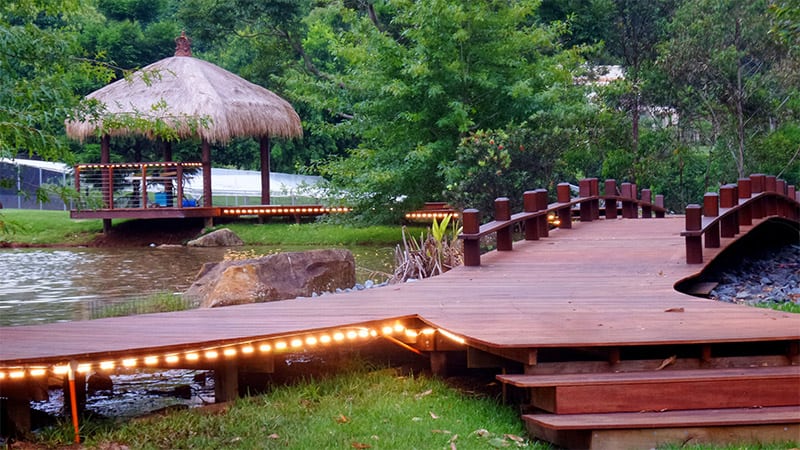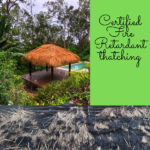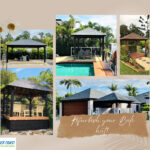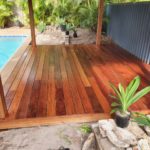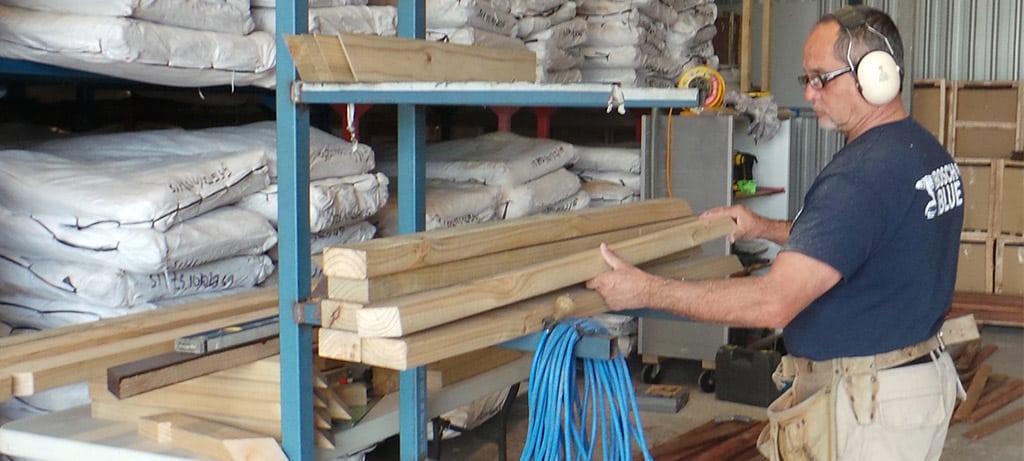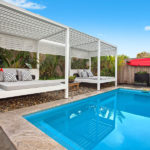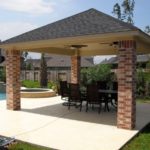Bali huts, also known as thatch huts or gazebos, are a stunning addition to any backyard. Their rustic charm, paired with the relaxed, tropical vibes they bring, can instantly transform your outdoor space into a serene escape. However, the thatching material used on these huts often requires regular maintenance, particularly rethatching, which can be costly and time-consuming. If you own a Bali hut, you know that after a few years, the thatch can begin to deteriorate due to weather exposure, pests, or just natural wear and tear.
But what if there was a way to preserve the beauty of your Bali hut without the need for constant rethatching? In this post, we’ll explore a new alternative to rethatching your Bali hut—a solution that’s not only durable but also low-maintenance, cost-effective, and long-lasting.
Why Traditional Thatching Needs Replacing
Before we dive into the alternatives, it’s important to understand why traditional thatching requires ongoing attention. While natural thatch, such as palm or coconut fronds, is aesthetically pleasing and offers excellent protection from the elements, it has its drawbacks. Over time, thatch can:
- Deteriorate from sun exposure: UV rays can cause the fronds to dry out and lose their strength.
- Attract pests: The organic nature of the material can make it a magnet for insects, birds, and rodents.
- Be prone to water damage: Heavy rain or constant exposure to moisture can lead to mould and mildew growth, causing the thatch to break down faster.
These factors lead to the need for rethatching every 5-7 years, which can be a significant financial and time investment. So, what’s the alternative?
The Benefits of Synthetic Thatching Materials
Synthetic thatch has quickly emerged as a leading alternative to traditional thatch, offering a long-lasting, low-maintenance solution for your Bali hut. Made from high-quality synthetic materials, synthetic thatch mimics the look and feel of natural thatch but provides several key advantages:
1. Durability and Longevity
Synthetic thatch is designed to withstand harsh weather conditions, including extreme sun, heavy rain, and wind. Unlike natural materials, which degrade over time, synthetic thatch is resistant to fading, rotting, and mould. This means you won’t have to worry about rethatching your Bali hut every few years, as synthetic thatch can last for 25 years or more, depending on the quality.
2. Low Maintenance
One of the standout features of synthetic thatch is how easy it is to maintain. Unlike natural thatch, which requires regular cleaning and the occasional treatment to keep pests at bay, synthetic thatch is resistant to insects and doesn’t absorb water. This eliminates the need for constant upkeep, allowing you to enjoy your Bali hut without the hassle.
3. Cost-Effective
While synthetic thatch may have a higher upfront cost than traditional thatch, the long-term savings are significant. Since you won’t need to rethatch every few years, the overall cost of maintenance is much lower. Synthetic thatch also holds its value and appearance better over time, so you won’t need to worry about deteriorating aesthetics.
4. Eco-Friendly Option
Many synthetic thatch materials are made from recycled or recyclable plastic and other eco-friendly materials. This makes them a more sustainable choice than natural thatch, which requires ongoing harvesting of palm leaves and other plants. By choosing synthetic thatch, you’re contributing to reducing the environmental impact of rethatching.
5. Aesthetic Appeal
If you’re worried that synthetic thatch won’t look as good as the real thing, rest assured. High-quality synthetic thatch is designed to mimic the appearance of natural materials so closely that it’s nearly indistinguishable. The vibrant colours, texture, and rustic charm are all preserved, ensuring that your Bali hut maintains its tropical, idyllic look.
Other Low-Maintenance Alternatives for Your Bali Hut
In addition to synthetic thatch, there are a few other alternatives that could help you reduce the need for rethatching while still preserving the beauty of your Bali hut. These options offer their own unique benefits, depending on the look and function you desire.
1. Metal Roofing with Thatch Overlay
For those who want the best of both worlds, you could consider using metal roofing with a thatch overlay. The metal roofing provides strong protection against the elements, while the thatch overlay offers the tropical aesthetic you’re after. This combination reduces the wear and tear on the thatch material, as the metal roof shields it from rain, sun, and wind, leading to fewer rethatching needs.
2. Polycarbonate Roofing
Another option is polycarbonate roofing, which is lightweight and durable, offering excellent UV protection while still allowing plenty of light to filter through. Polycarbonate roofing can provide the same protective benefits as metal roofing, with the added bonus of a translucent design that enhances the aesthetic appeal of your Bali hut. It’s a great choice if you want a bright and airy outdoor space without worrying about constant maintenance.
3. Thatch Effect Coatings
Some homeowners are opting for thatch effect coatings that can be applied directly to roofing materials like metal or timber to create a thatched look without using actual thatch. These coatings are weather-resistant, durable, and low-maintenance, and they provide a realistic thatched appearance. While they won’t offer the full texture of natural or synthetic thatch, they’re a viable option for those seeking a hassle-free alternative.
Why Choose East Coast Bali Huts and Gazebos for Your Bali Hut Upgrade?
At East Coast Bali Huts and Gazebos, we specialise in designing and building stunning outdoor spaces that are as functional as they are beautiful. If you’re considering upgrading your Bali hut with a more durable, low-maintenance thatch alternative, our team can guide you through the best options to suit your style, budget, and long-term goals. We offer high-quality synthetic thatching solutions, along with other customisation options, to ensure your Bali hut looks great and stays intact for years to come.
We understand the importance of having an outdoor space that’s both inviting and practical, and we’re committed to providing solutions that minimise maintenance without compromising on beauty.
Conclusion
Rethatching your Bali hut every few years can be a time-consuming and costly process, but with the advent of synthetic thatch and other low-maintenance alternatives, you can enjoy your outdoor oasis without the constant upkeep. Whether you choose synthetic thatch, metal roofing, or polycarbonate panels, these alternatives provide a long-lasting solution that will keep your Bali hut looking pristine for decades.
If you’re ready to upgrade your Bali hut with a more durable and cost-effective solution, contact us at East Coast Bali Huts and Gazebos. Let us help you design an outdoor space that’s easy to maintain and beautiful to enjoy for years to come.

